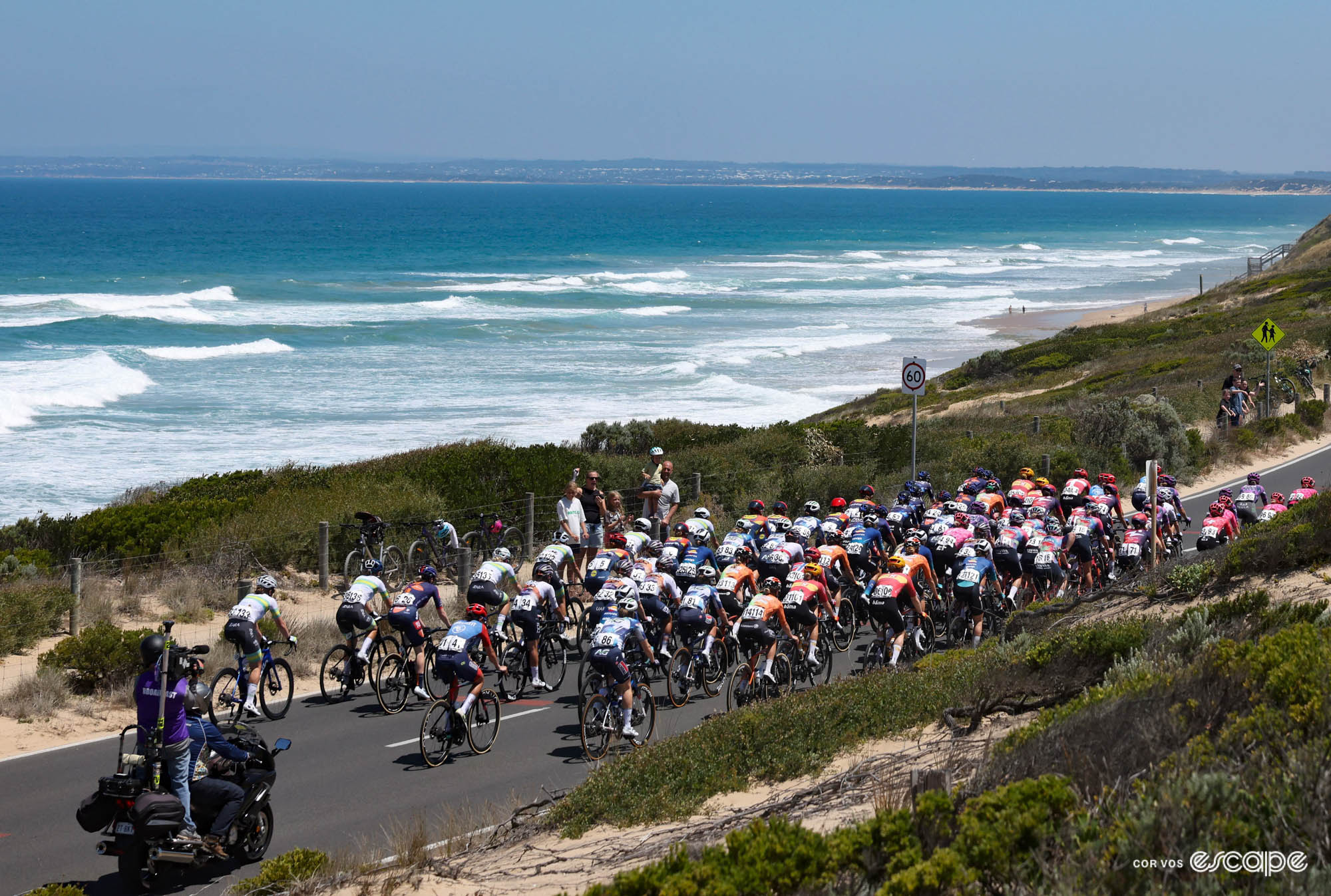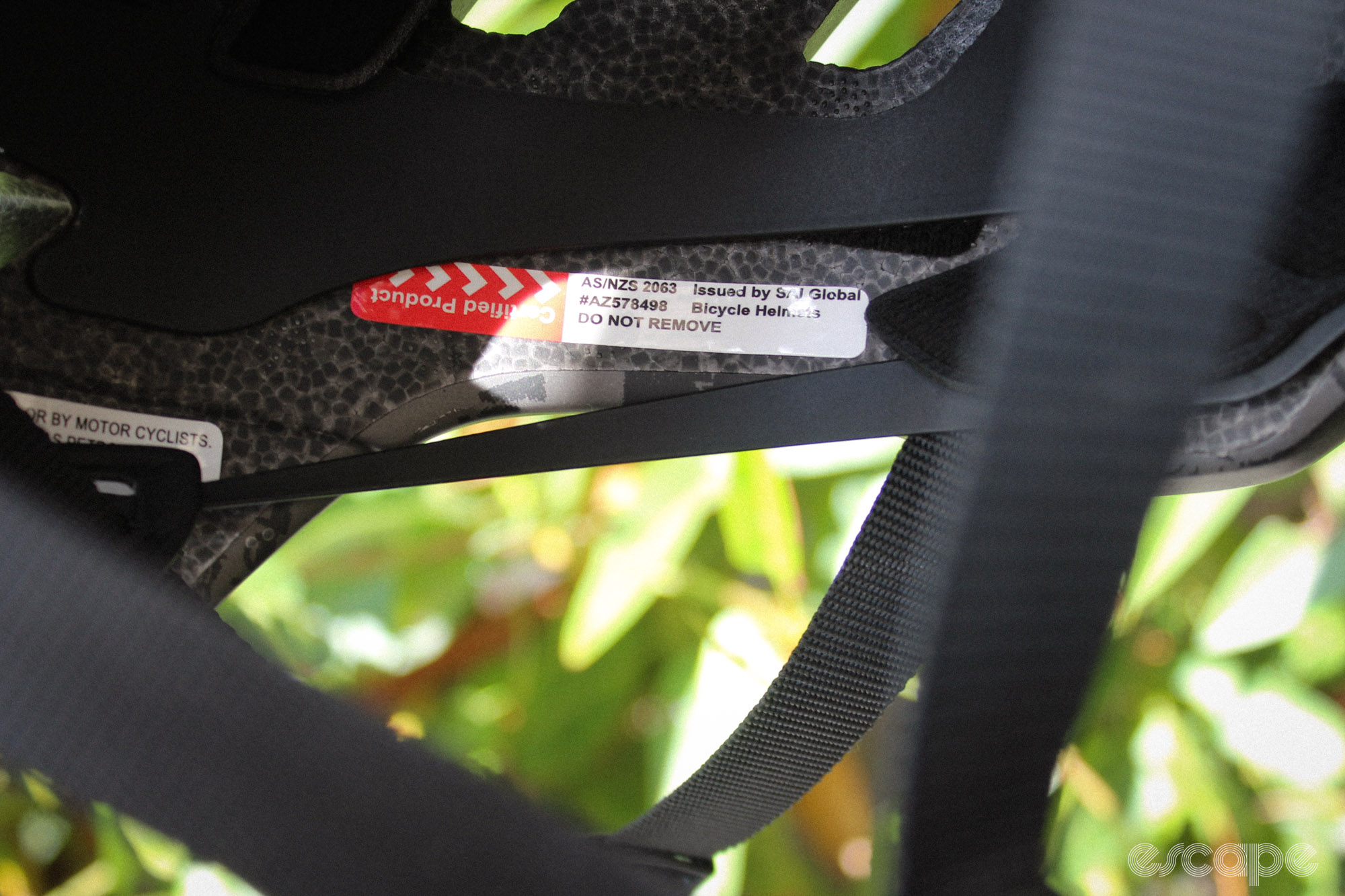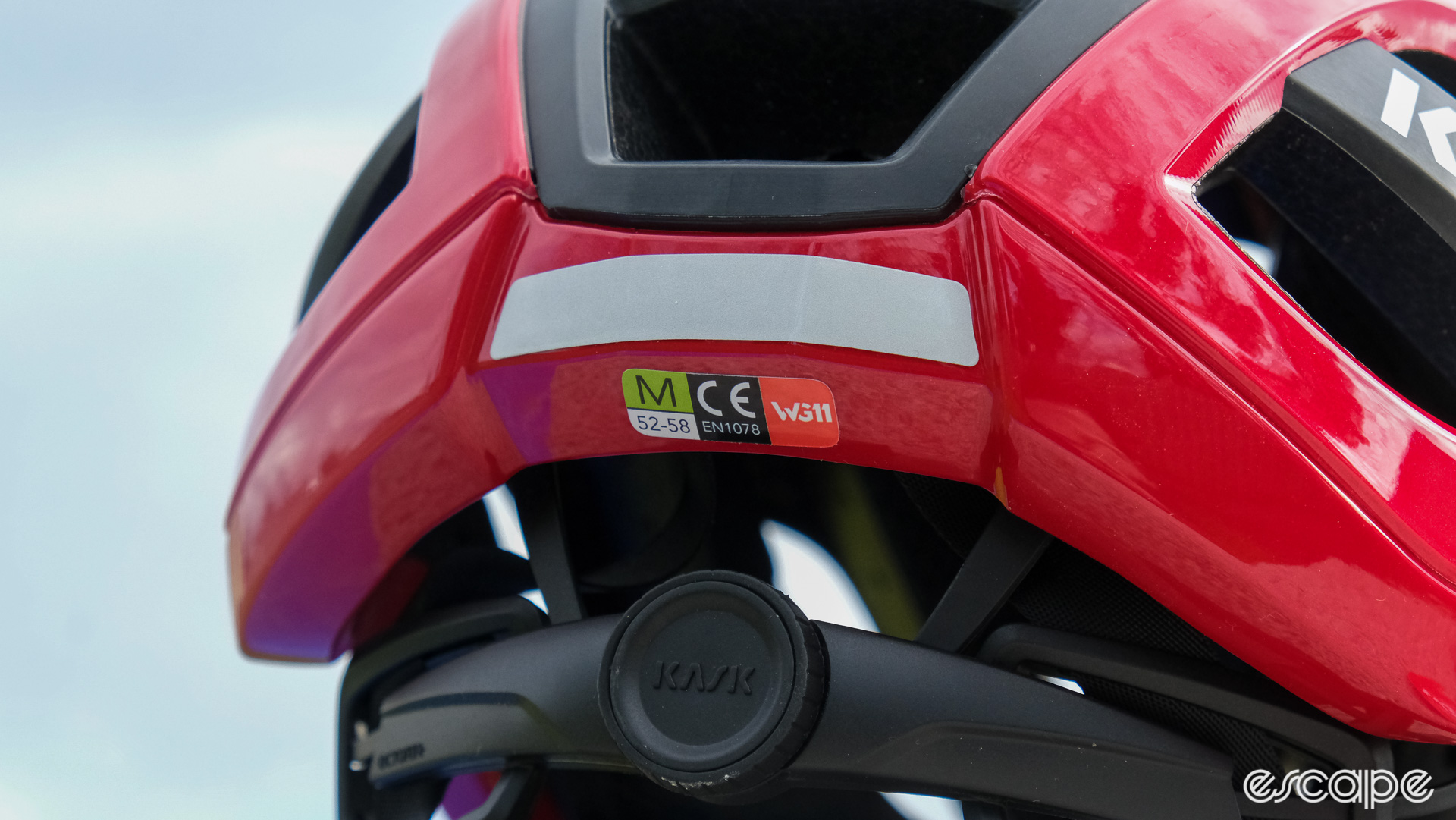Here's a little bureaucratic riddle for you: where can you buy a bike helmet, but must never wear it? The answer: the Australian states of Victoria and Tasmania.
Australia’s a global outlier when it comes to bicycle helmets. For one: it’s among the few places with a mandatory helmet law. For another: it has long held its own helmet standard, which is distinct from those used in, say, the US or Europe. As a result, the Australian market has long had to navigate a difficult and potentially costly landscape, with unique (and expensive) testing required for each size and colour of each helmet brought into the country. On a global scale, Australia’s not a big player, and the burden on manufacturers to meet the Australian standard left an unfavourable outcome: less choice for consumers, and more expensive helmets.
So when Australia’s helmet standard was updated in March 2024, there was cause for optimism – and consumers suddenly had theoretical access to helmets meeting any of six standards: old and new Australian standards, the European standard (EN-1078), Snell, and CPSC and ASTM standards from America. For punters, that significantly broadens the available offering, and in the months since, a whole heap of new helmets and previously unseen brands have landed on the Australian market.
But there’s a catch: just because you can buy them, doesn’t mean you can actually use them.
Layers of law
The crux of the problem is that the new rule – encompassing access to most of the helmets on the market – comes at a federal level from the Australian Competition and Consumer Commission (ACCC), which influences the importation and sale of products bought into Australia. But a level below that federal jurisdiction lies the country’s eight states and territories, which each have their own road rules prescribing the actual use of bicycle helmets – and they move on their own schedule, incorporating or ignoring ACCC sales guidelines as they go. For months, these helmets were legal to buy – but illegal to use.

By June 2024, New South Wales became the first state to update its road rules to incorporate the changes, with Western Australia, South Australia, Queensland and the two territories (the ACT and Northern Territory) following suit. For those playing along at home – especially those whose homes are in Victoria and Tasmania – there are some glaring omissions there: consumers in those states can buy a helmet from an international standard, but if they are wearing it on the road, they are – in the eyes of the law – seen as wearing no helmet at all.
Peter Bourke, general manager of Bicycle Industries Australia – a body representing the interests of the Australian cycling industry – has been following this in depth, and has been involved in years-long negotiations on previous Australian Standards, as well as the ACCC review. The gap, he says, exposes Victorian and Tasmanian riders – no matter how well-intentioned – to a number of risks.
The first is the minimal risk of getting caught breaking the road rules: “they are 100% legal to sell in every state, but will the police catch you [for using them]? I can say that it’s unlikely – unlikely – that the police will catch you if you wear the incorrect standard helmet,” Bourke says. But that doesn’t rule out the possibility that it could happen.
The bigger issue, he says, is if something goes wrong. “If you’re wearing a helmet that’s not approved in that state, it’s the equivalent legally of not wearing a helmet at all … and that goes for legal issues as well as insurance issues. That’s where the real concerns are.”
As a result, Victorian or Tasmanian riders using an international standard helmet can be considered to have contributory negligence because they aren’t wearing a road-law-approved helmet – in turn giving insurance companies wiggle room to lower payouts, and restricting a rider’s options to pursue legal action.
A knowledge gap
Exacerbating this issue further, Bourke says, is the “minimal amount of consumer education” that has come in the wake of the helmet standard changes. “It’s actually really hard to know who has changed what laws when," he says. "We have been following it, brands have been following it, but the governments are not announcing they make a change – so in reality, it’s actually very hard to even find the information."
Alongside the difficulty accessing the necessary information for consumers to make the right choices, there’s the complication of online sales: a helmet can be shipped around Australia – or the world – from a jurisdiction where it’s perfectly legal to a consumer in Victoria or Tasmania, who probably has no idea that they can’t legally use it. That’s an easy enough trap to fall into: if you’re buying a helmet in Australia with an international standards sticker on the inside, you’d expect to be able to wear it in Australia. Depending on where you are, that’s not necessarily the case – and there’s no clear timeline for Victoria and Tasmania moving in step with the rest of the country. “They haven’t identified it as a priority,” Bourke says. “Each state has its own legislative process, and they will go through their own process.”

But while the international standards adopted by the ACCC are well-regarded, there is control ceded by moving away from an Australian-standards-only model. “Once we have a harmonised legislation across the country, it would be extremely unlikely that any of the brands will test to the Australian standard in the future,” Bourke says. Makes sense: there are onerous financial requirements to do so, and now there’s no legal requirement for manufacturers to do so when they could just pick up helmets from the main production run. But, Bourke says, “we have no control over the European standard or the American standards, so we have to hope that Europe and America maintains a good level of standard … that’s one thing we’ve lost control over.”

Looking ahead
This labyrinth of laws and standards is, hopefully, a temporary one – and the change to the ACCC rules should eventually result in favourable outcomes for all Australian riders and the distributors providing them with helmets. “There may be some minimal price reduction, but that is unlikely,” Bourke says. “We would expect there to be a bigger range, and we expect that new models of helmets will be on the market sooner.”
For cyclists across Australia, that’s a nice possibility: more helmets to choose from in more colours, not just the pared-back selection of neutral tones that are usually represented on the sales floor. But until all the states make the necessary shift in their road rules, it’s a case of buyer beware.
Did we do a good job with this story?




